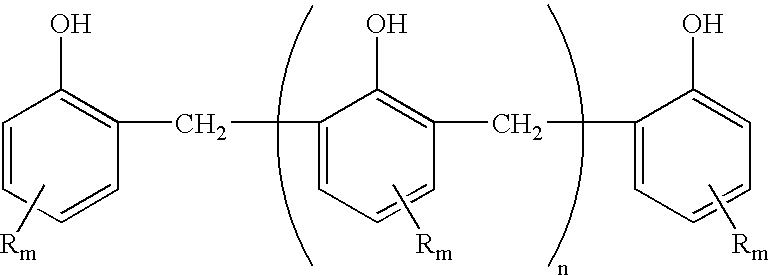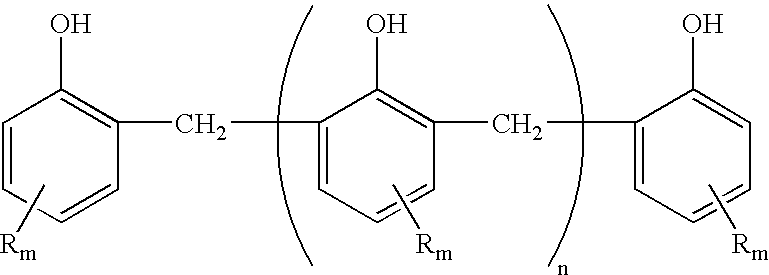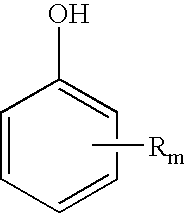Developers for thermal recording materials and thermal recording materials
a technology of thermal recording and thermal recording materials, applied in thermography, instruments, photosensitive materials, etc., can solve the problems of low thermal response, insufficient color density achieved by high-speed recording, inconsistent color density, etc., and achieve the effect of improving the sensitivity of thermal recording and superior
- Summary
- Abstract
- Description
- Claims
- Application Information
AI Technical Summary
Benefits of technology
Problems solved by technology
Method used
Image
Examples
example 1
[0143]
Liquid A (developer dispersion)condensation composition containing 80% of 2,2′- 6.0 partsmethylenebis(4-methylphenol)10% aqueous polyvinyl alcohol solution18.8 partswater11.2 partsLiquid B (sensitizer dispersion)diphenylsulfone 4.0 parts10% aqueous polyvinyl alcohol solution12.5 partswater 7.5 partsLiquid C (dye dispersion)3-(N-ethyl-N-isoamylamino)-6-methyl-7-anilinofluoran 2.0 parts10% aqueous polyvinyl alcohol solution 4.6 partswater 2.6 parts
[0144] The above-mentioned Liquid A, Liquid B and Liquid C were ground in a sand grinder to an average particle size of 1 micron. The dispersions were mixed at the following ratio to give a coating liquid.
Liquid A (developer dispersion)36.0 partsLiquid B (sensitizer dispersion)24.0 partsLiquid C (dye dispersion) 9.2 partsKaolin clay (50% dispersion)12.0 parts
[0145] The above-mentioned coating liquid was applied to one side of a basic paper having a basic weight of 50 g / m2 in a coating amount of 6.0 g / m2 and dried at room temperature ...
example 2
[0146] In the same manner as in Example 1 except that a condensation composition containing 60% of 2,2′-methylenebis(4-isopropylphenol) was used instead of the condensation composition containing 80% of 2,2′-methylenebis(4-methylphenol) used for Liquid A (developer dispersion) and diphenylsulfone of Liquid B (sensitizer dispersion) was not used, a thermal recording material was prepared.
example 3
[0147] In the same manner as in Example 1 except that a condensation composition containing 60% of 2,2′-methylenebis(4-isopropylphenol) was used instead of the condensation composition containing 80% of 2,2′-methylenebis(4-methylphenol) used for Liquid A (developer dispersion), a thermal recording material was prepared.
PUM
| Property | Measurement | Unit |
|---|---|---|
| temperature | aaaaa | aaaaa |
| particle size | aaaaa | aaaaa |
| temperature | aaaaa | aaaaa |
Abstract
Description
Claims
Application Information
 Login to View More
Login to View More - R&D
- Intellectual Property
- Life Sciences
- Materials
- Tech Scout
- Unparalleled Data Quality
- Higher Quality Content
- 60% Fewer Hallucinations
Browse by: Latest US Patents, China's latest patents, Technical Efficacy Thesaurus, Application Domain, Technology Topic, Popular Technical Reports.
© 2025 PatSnap. All rights reserved.Legal|Privacy policy|Modern Slavery Act Transparency Statement|Sitemap|About US| Contact US: help@patsnap.com



